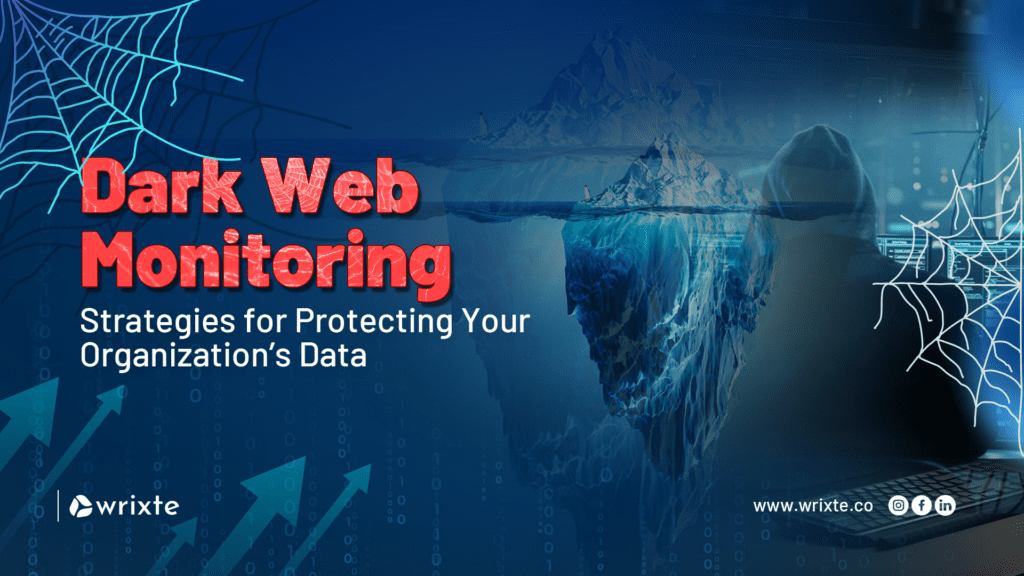The dark web represents a formidable threat to organizations. This hidden part of the internet, notorious for illegal activities, serves as a marketplace for stolen data, compromised credentials, and other sensitive information. With data breaches becoming increasingly common, dark web monitoring is a crucial strategy for protecting an organization’s digital assets. This blog will delve into effective dark web monitoring strategies and how they can safeguard your organization’s data.
What is the Dark Web’s Impact on Cybersecurity?
The dark web operates anonymously, allowing cybercriminals to buy and sell stolen data without fear of detection. This poses a severe risk to organizations, especially those handling sensitive information like financial data, healthcare records, and proprietary business information. The impact of stolen data extends beyond immediate financial loss—it can lead to long-term reputational damage, regulatory fines, and loss of customer trust.
Why Dark Web Monitoring is Essential:
- Early Threat Detection: Monitoring the dark web helps identify potential threats before they materialize into full-blown cyberattacks.
- Data Breach Awareness: It provides visibility into whether your organization’s data has been compromised, allowing for swift containment and remediation.
- Risk Mitigation: By discovering exposed credentials or intellectual property early, companies can take preventive measures to secure their systems.
Key Strategies for Effective Dark Web Monitoring
- Adopt a Proactive Approach: Implementing proactive monitoring solutions can alert organizations to any mention of their data on the dark web. This includes searching for company-specific keywords, employee email addresses, and sensitive information. By actively scanning forums, marketplaces, and other illicit sites, organizations can gain insights into what data is being discussed or traded.
- Leverage Advanced Threat Intelligence: Utilize threat intelligence platforms that specialize in dark web monitoring. These platforms can automate the process of scanning and analyzing data from the dark web, providing actionable intelligence. They offer tools to track specific types of information, such as personal identifiers (PII), financial details, or confidential business documents.
- Collaborate with External Experts: Engaging with cybersecurity firms that specialize in dark web intelligence can enhance your monitoring capabilities. These experts have access to restricted parts of the dark web and use sophisticated techniques to gather information that would be difficult for an organization to obtain independently. They can provide detailed reports and recommendations tailored to your specific risk profile.
- Implement Multi-Factor Authentication (MFA) and Zero Trust Policies: Strengthening access controls within your organization can mitigate the damage if compromised credentials are found on the dark web. MFA requires users to verify their identity through multiple methods, reducing the risk of unauthorized access even if passwords are exposed. Zero Trust policies ensure that no user is trusted by default, and continuous verification is required for access to sensitive systems.
- Educate Employees and Create a Security Culture: Human error is often a weak link in cybersecurity. Training employees to recognize phishing attempts, suspicious activities, and proper data handling procedures is essential. Regularly updating them on new threats and providing guidelines on safeguarding their personal information can reduce the risk of credential compromise.
Responding to Dark Web Findings
When your organization’s data is discovered on the dark web, swift action is critical. Here’s a step-by-step response plan:
- Identify the Scope of the Breach: Determine what specific data has been compromised. Is it customer information, internal documents, or employee credentials? Understanding the nature and extent of the breach is essential for formulating an effective response.
- Notify Affected Parties: If personal data is involved, promptly notify affected individuals and regulatory bodies as required by law. Transparency is crucial for maintaining trust and mitigating legal repercussions.
- Reset Credentials and Strengthen Security: Immediately reset any exposed credentials and enhance security measures across the organization. This may include updating software, tightening access controls, and revising data handling procedures.
- Conduct a Forensic Analysis: Engage cybersecurity experts to conduct a thorough investigation. Understanding how the breach occurred and identifying any vulnerabilities in your systems will help prevent future incidents.
- Review and Update Incident Response Plans: Use the incident as a learning opportunity. Review and update your organization’s incident response and data protection policies based on the insights gained from the breach.
Future-Proofing Against Dark Web Threats
As cyber threats continue to evolve, organizations must adapt their security strategies. Incorporating AI and machine learning into dark web monitoring can enhance detection capabilities by identifying patterns and anomalies that human analysts might miss. Additionally, fostering collaboration between private enterprises and law enforcement agencies can disrupt criminal activities on the dark web and reduce the overall threat landscape.
Conclusion
Dark web monitoring is no longer an optional cybersecurity measure—it is a necessary strategy for protecting an organization’s data in an increasingly dangerous digital environment. By implementing proactive monitoring, leveraging advanced threat intelligence, and maintaining a robust incident response plan, organizations can significantly reduce their risk of data breaches and other cyber threats. The key to success lies in staying vigilant, adapting to new threats, and fostering a culture of security awareness within the organization.

